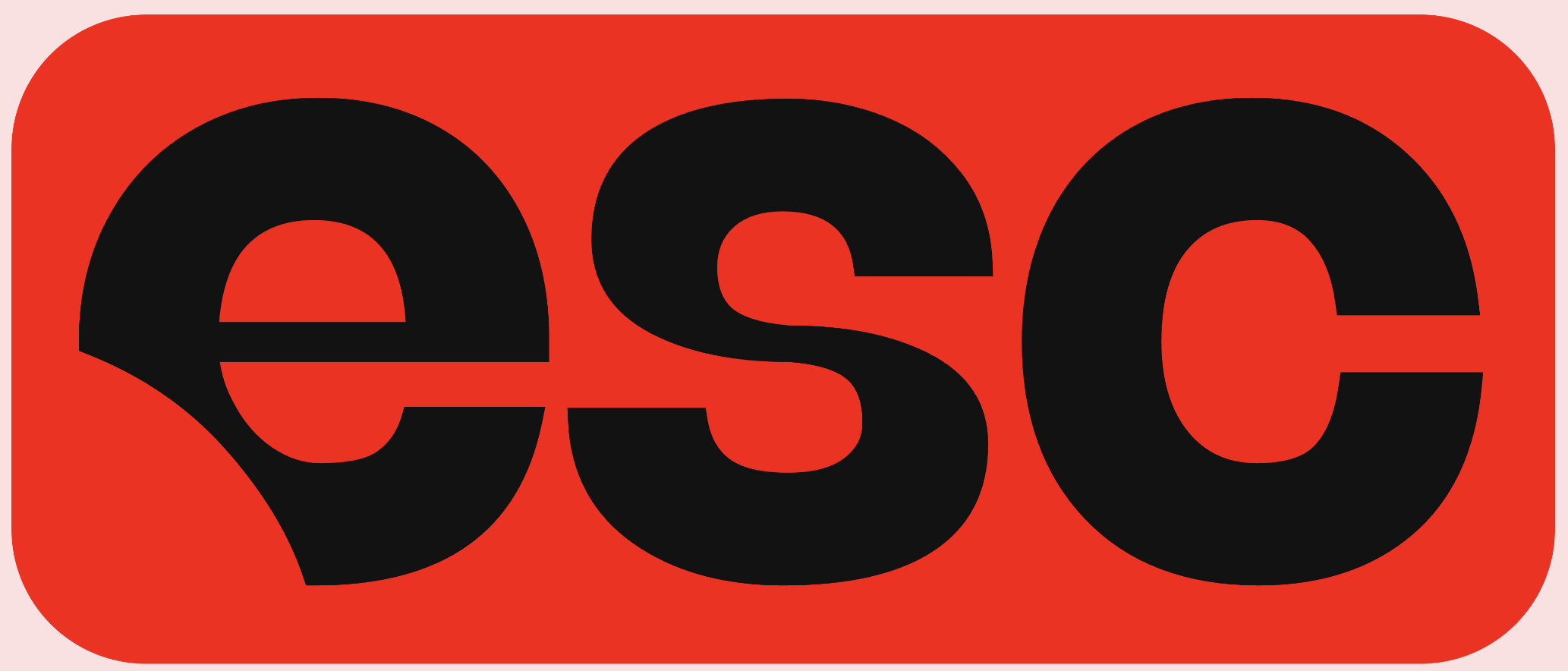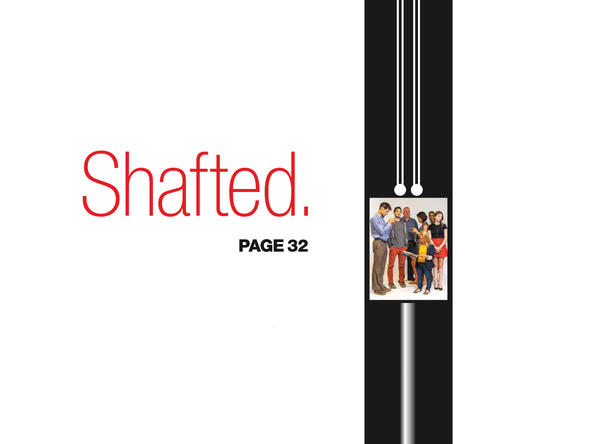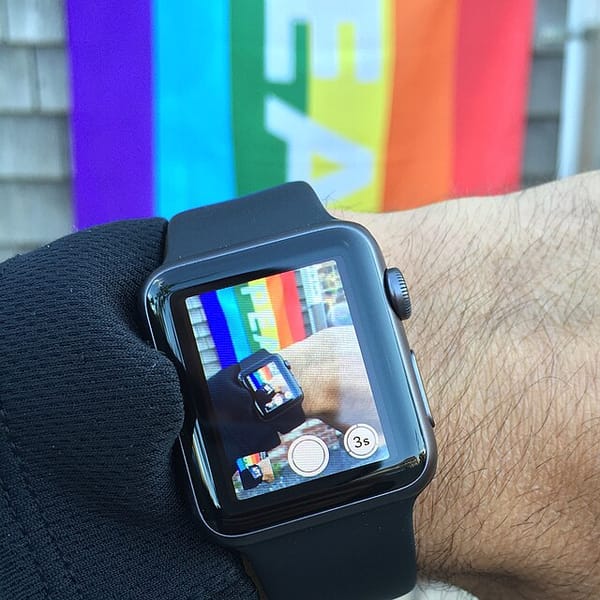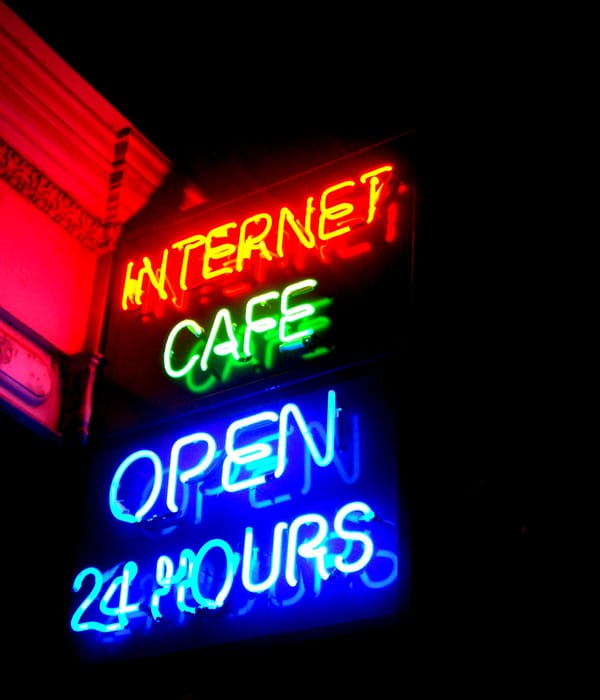On Power Lunch: Alicia Kennedy, queen of essays and newsletters, tries to decide on a restaurant
She sold her first book on a lie. The lie? That she cared about tech burgers. Now, in the middle of a move back to New York City, a move off Substack, and her memoir, we set the table to discuss the mess of media work— covering everything from Carrie Bradshaw’s per word rates to martini tattoos.

When I think of the word “on,” two names spring to mind: Celine Dion and Alicia Kennedy.
“On Food Media.” “On Past Selves.” “On Airplane Food.” I could, well, go on and on.
Not every Kennedy headline begins with the word “on.” But the vast majority of them do. And few essayists on the world wide web top all these subjects like Kennedy. A former Village Voice contributing writer, she's a queen of independent newsletters — queen of the rarer kind of newsletters that have a literary bent, academic rigor, dare I say, voiciness, darling.
Her primary lanes are journalism, food and media criticism. And beneath myriad “On X” headlines, Kennedy puts her personal spin on the essay form in her twice-weekly letter, From the Desk of Alicia Kennedy. It grew in popularity in the early days of Substack (though after being a vocal critic of the platform, she left it behind this summer). Her career has also been a subject of her writing, tracing her evolution from New York Magazine copyeditor and vegan baker to the Twitterati and newsletter writer. And her trajectory tells us much about media careers today — and how the essay has evolved in the newsletter age. Oh, and can you guess the title of her forthcoming second book, a memoir? “On Eating” is out in April 2026 from Hachette Book Group.
Before Kennedy, the “On X” title stretches back to antiquity, of course; think Cicero’s “On Duties” (“De Officiis” in Latin) or Seneca’s “On Anger” (“De Ira”). The convention went harder during the Enlightenment when philosophers needed a dignified way to signal, “yeah, I’m about to hold forth on this topic with systematic rigor,” i.e., “let’s go girls!” The Latin preposition de (“concerning” or “about”) got translated to the concise “on” in English, cementing it as the title template for many of the great essays written in the language.
But the convention acquired different cultural valences over time. In the 18th and 19th centuries, “On X” titles were aggressively dude-landia. Kant’s “On Perpetual Peace,” Mill’s “On Liberty,” a whole lot of men “On-ing” things. The format implied the dude had achieved some definitive perspective on the subject. The preposition “on” suggested elevation, as if the writer is literally on top of the topic, surveying it from above. The modern literary essay inherited this tradition but with a crucial and subversive shift in tone. When 20th century writers such as Joan Didion writes “On Keeping a Notebook” or Susan Sontag gets polemical “On Photography,” they’re simultaneously invoking that classical authority while consciously undermining it — the “On …” becomes almost ironic, acknowledging that any single perspective is necessarily partial and provisional.
Today, the convention endures because it perfectly captures the essay’s signature gesture: not claiming to exhaust a subject, but rather offering one sustained meditation on it, circling around, landing briefly, then taking flight again. It also persists, perhaps most significantly, because writing titles is really fucking hard, OK?
Another reason it endures in the independent newsletter space, I might add, is Kennedy herself, one of our most thoughtful — and most stylish — essayists.
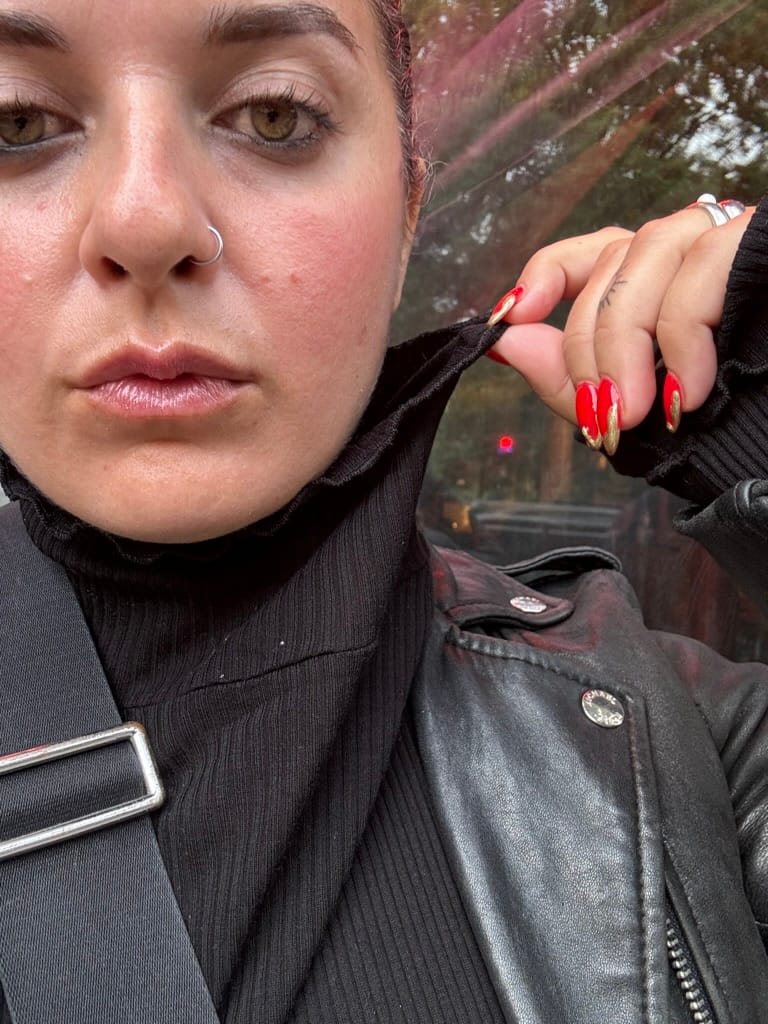
On June 23, Kennedy sent me an email with the subject line “On Lunch.” I panicked for approximately three seconds before clicking it.
I was like, is Kennedy mad at me because the Power Lunch interview that we recorded on May 14 has still not gone live on ESC KEY .CO?! Because, indeed, Kennedy is the fifth Power Lunchee on this website. And I had lunched with her in the middle of May, while she was in the middle of far more than the month: Wrapping up edits on her second book. Relocating her newsletter from Substack for a whole host of reasons. And then a literal relocation from Puerto Rico back to New York City, where she got her start as a writer. (Clearly, Kennedy has bigger things to worry about than the moving target publication date of this speculative luncheon.)
But upon reading her email, it was immediately obvious this was her newsletter on lunch, broadly: the institution, the ritual, the midday hunger. She wrote in the lede, “lunch can be haphazard, and that’s why I love it.”
This is the meal of the day when one can really demonstrate a commitment to leisure, or simply an ability to access leisure. I’ve worked from home for 15 years, so even when I had a full-time job that required me to have my laptop attached to my person for ten hours a day, lunch has been a means of taking a moment for myself, a time when only my appetite matters. Breakfast is routine; dinner is obligation. Lunch is freedom. This is how I think about the three meals of the day.
Sometimes freedom can overwhelm. When we met a month earlier, the potential for unlimited lunch freedom appeared to momentarily stump Kennedy. I asked her where in the world we should lunch. We could go anywhere. She replied: “I’ve been thinking about this question and it’s so difficult!” Even Kennedy sometimes struggles to choose a lunch spot.
“Would I rather spend $800 a month on food and beverage [than a car]? Yes, I would!”
The logic in her selection reveals where she’s been (“I’m a very predictable vegetarian of a certain aesthetic sensibility”); the lingering allure of the fantasy print media lifestyle (“I like being somewhere that feels like, if I were a magazine editor in the ’90s, I would have had lunch here”); and where she’s going — keeping it car-free in the Big Apple, baby (“would I rather spend that $800 a month on food and beverage? Yes, I would”).
Once we’ve virtually tucked into her chosen spot, a classic in Manhattan, we quickly get into the mess of life as a working writer at the midpoint of the 2020s: the market realities of making media as a self-employed person (e.g., why nobody pays freelance writers the rates Carrie Bradshaw was getting in the fourth season of “Sex and the City”); the importance of our choices, even when the world makes you want to lose your mind (her first book was 2023’s “No Meat Required”); and as a writer shaped by the quintessential alt-weekly, the shuttered Voice, she tells me where she thinks the alt-weekly voice lives on.
Her answer, in short? “Newsletters,” but it wouldn’t be a lunch with Kennedy if she didn’t challenge what we really mean when we use that term in the first place. And in doing so, we get into the kinds of newsletters that immediately make Kennedy want to click unsubscribe. Or, as she might title an essay on the subject, “On Unsubscribing.” Read on.
There’s only one rule to Power Lunch: we are granted the power to lunch anywhere in the world, but the Power Lunchee must pick only one place where we will virtually gather. This rule is now in effect.
🍴🍴🍴
JD: You made it! Where in the world are you right now?
AK: I’m in Old San Juan. But my husband and I are in the process of moving back to New York.
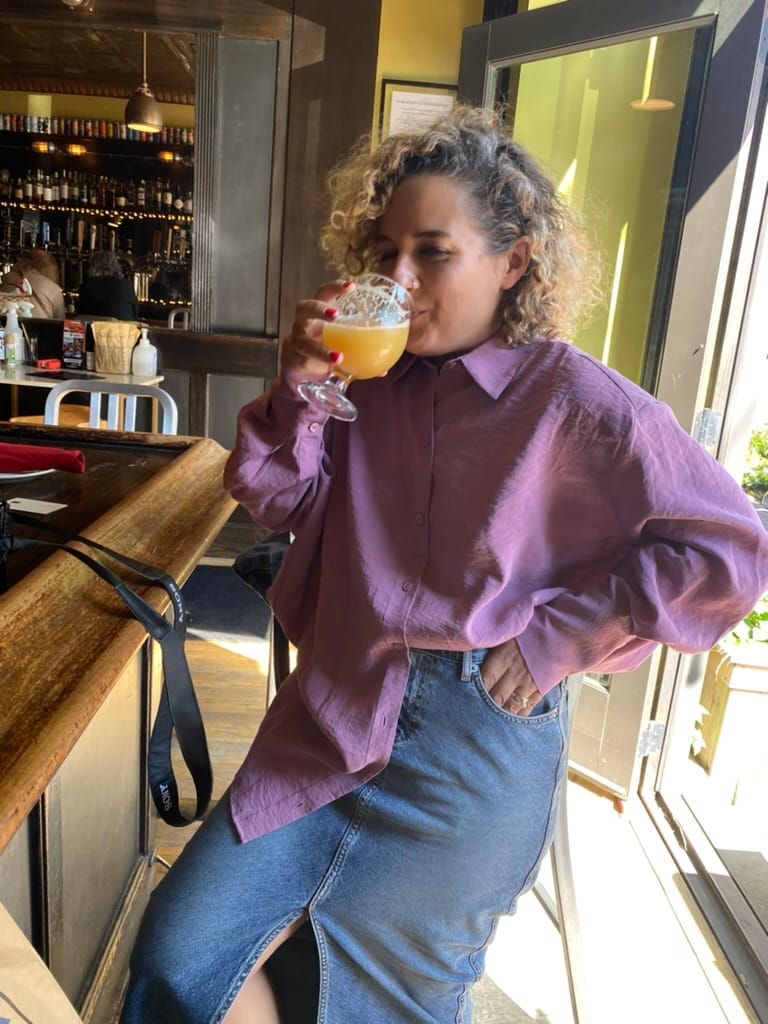
JD: What’s motivating the move back?
AK: I’ve been writing about Puerto Rico since 2015, the foodways here. The work changed a lot being here full time because I actually got to experience what it’s like to navigate these things and not come in with rose-colored glasses. (No “oh my god, tropical fruits!”)
We don’t have a car because I work at home, my husband walks to work. But people have weird reactions. Either you’re theoretically anti-car, which I am on a level. Or people assume you’re poor. It’s like, would I rather spend that $800 a month on food and beverage? Yes, I would.
The cost of living here is going up as it is everywhere, but the quality of life isn’t compatible with that cost. If we move somewhere where it’ll be a bit more expensive in terms of rent, but quality of life would increase astronomically, that’s the calculus we’re doing. And the decision is, back to New York City.
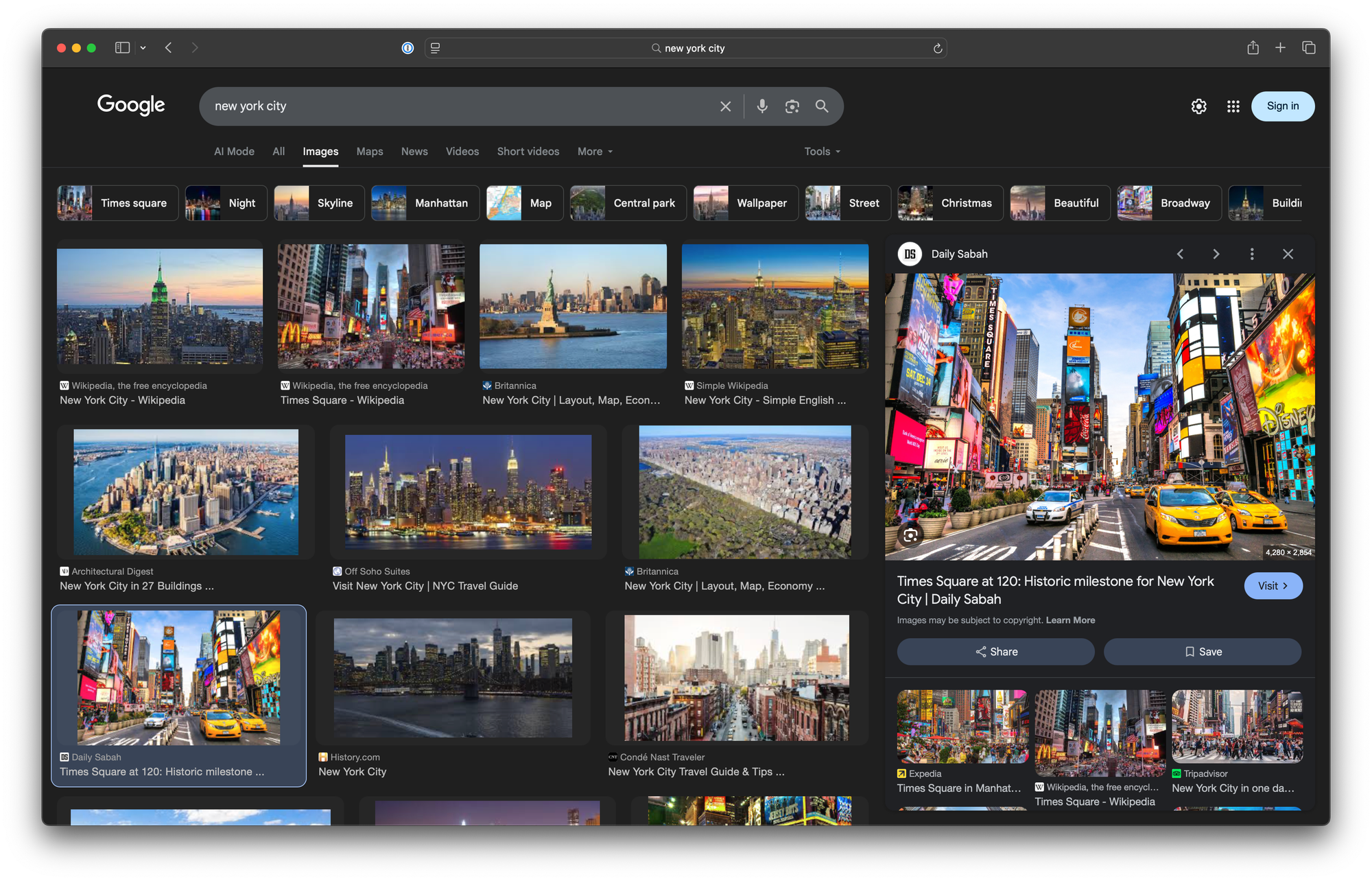
JD: I’ve organized my entire life around not having a car. Before moving to London, I was kind of a weirdo in Portland, Oregon as I did not have a car. I’m sure some colleagues thought me being a travel editor without a car in the Pacific Northwest was kind of profane.
AK: Yes. People here go to the rivers on weekends. My husband and I aren’t really beachy, outdoorsy people. We’d rather be in the city.
JD: Well, the hard thing about Power Lunch is we can virtually lunch anywhere, so where do we go? The world is our oyster. The pressure is on.
AK: I’ve been thinking about this question and it’s so difficult. In New York, the first place I go is Superiority Burger. I’m a very predictable vegetarian of a certain aesthetic sensibility.
But I really love to go to places that have been around since the early 2000s or ’90s or ’80s. I like Cafe Mogador or Cafe Gitane because I like being somewhere that feels like, if I were a magazine editor in the ’90s, I would have had lunch here.
Let’s go to Cafe Gitane in SoHo, which is now overtaken by the SoHo girls, but it’s still cool. I think I’ve seen Paper magazine people there.
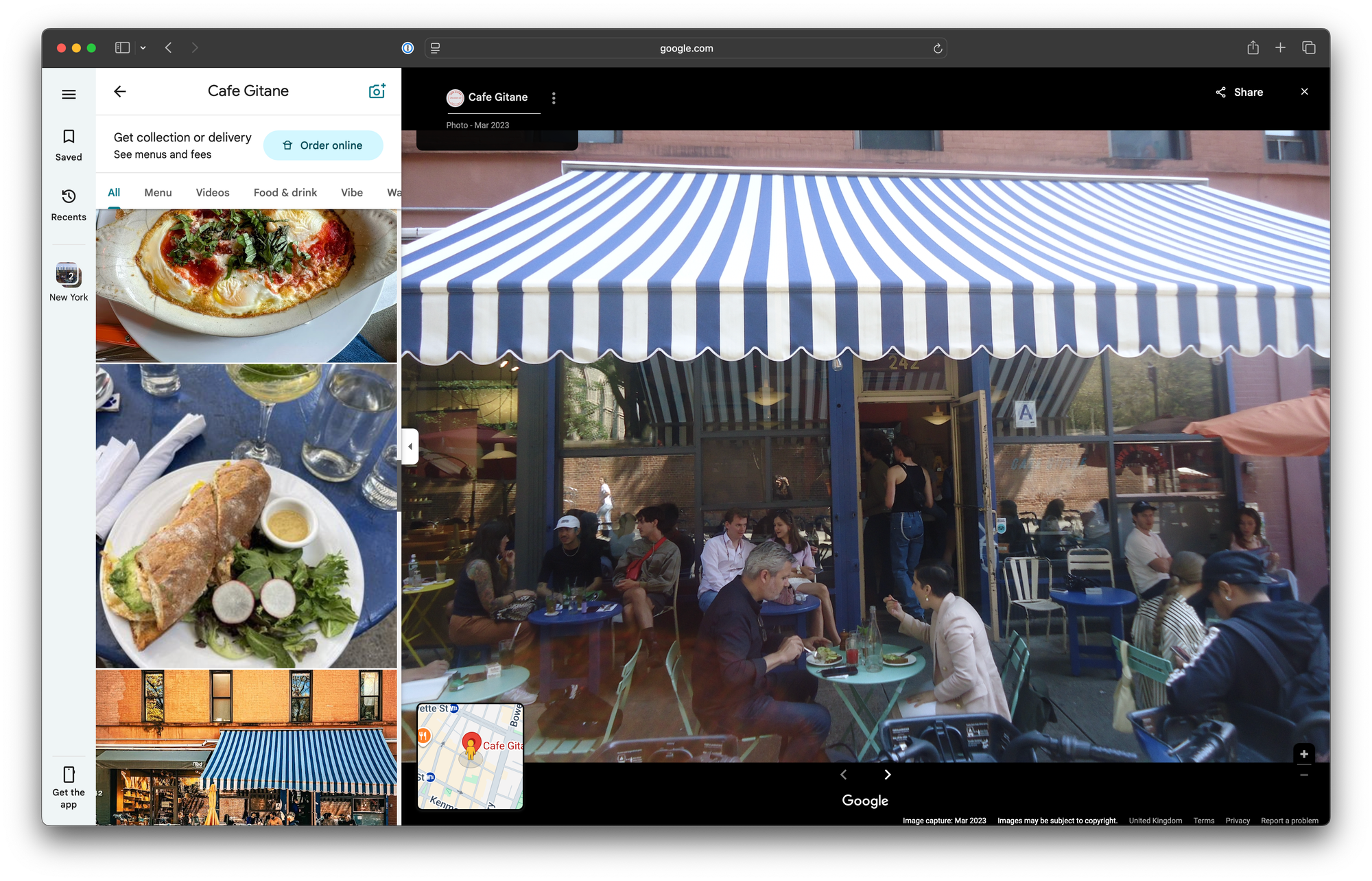
JD: What are we ordering?
AK: We get an Americano, maybe a fresh-squeezed orange juice. Then it depends how I’m feeling that day, whether I’m getting the egg sandwich, which has chipotle mayo on a baguette, or this eggplanty, tomatoey, olivey thing on focaccia. Today I’d go for the egg sandwich.
JD: Honestly, same for me. I like your thought process. And, zooming out for a moment, this whole “one rule” of Power Lunch has been fun for me in observing people’s logic. It kind of begs questions about the philosophy of lunching and the strategy for choosing a location for the kind of conversation you want to have, as well as what message you want to convey through that selection. I like reflecting on that. The art of lunch — I feel like that’s something we’ve lost a bit due to a host of sociopolitical reasons including the cost of living. But my whole agenda is basically a lunch agenda: I want more chatty lunches for everyone!
AK: I love that. I love to lunch. I think as a freelancer, I just feel lunch is so essential to my happiness.
“My brain was so stuck in digital media. I was so stuck in a ‘my thoughts stop at 3,000 words’ kind of thing.”
JD: So essential. We can never lunch enough. I aspire to make lunch my brand. But let’s talk about your brand.
You’ve got a second book in the works. I always think it’s fascinating to hear about the psychology around a second outing, especially what’s going on in the minds of good writers after a good first book. How different does it feel working on this one? What’s harder now?
AK: The first book was so hard to write. I sold it in June 2020 for just a $10,000 advance to a very storied but small press, Beacon Press. I didn’t know what the hell I was doing.
My brain was so stuck in digital media. I was so stuck in a “my thoughts stop at 3,000 words” kind of thing. It was trial by fire figuring out how to write a book.
“No Meat Required” doesn’t really have a narrative arc. It’s nonfiction. It serves a specific purpose to chronicle a very specific time in plant-based food history, the cultures of it, the subcultures, the politics and the food, making it very clear that the food and the politics and the subcultures are very entwined in plant-based eating in the United States.
Every chapter covered a different subject. When it was coming out, I said to my mother, “I feel like I’ve locked someone in a room and told them everything I thought about food. People are going to think I’m nuts.” Then I’m like, wait, but that’s what a book is. The writer is locked in a room writing it, and when someone reads it, they’re sort of in the room with them.
That said, I wrote that book because it was the book I had that would sell, frankly. I sort of had this beat writing about vegan and vegetarian food, especially vegan food. Tech burgers were all the rage, Beyond Meat and Impossible Burgers. When I sold it, I had to rejig the proposal to be more about that stuff.
Then when it sold, the pandemic was happening. The pandemic’s origin was zoonotic disease. I was like, wait, can I actually just write this book the way I wanted to write it, which is that we have to change how we eat? And here are all these examples of people who have done this? So I did. I ultimately wrote the book I wanted to write with “No Meat Required,” even though I kind of sold it on a lie.
JD, laughing: Wait, what was the lie?!
AK: The lie was that I cared about those tech burgers! Thank god I didn’t care about those things because they are on such a downswing and no one gives a shit anymore.
JD: Your second book, then, is a significant departure, at least partly in that it wasn’t sold on a lie.
AK: Yes! “On Eating” is so different it’s not even really a comparison. Now I know I can’t really anticipate what writing a book is going to feel like.
“No Meat Required” was more like me-as-a-journalist’s book. “On Eating” is me-as-a-writer’s book, if that makes sense. The second is the book that’s explaining not just my life and not just ingredients, but it has the language and more of the arc and the subtext.
The second book has been a much more exciting process. My editor for this book has been very involved with it. When I was writing the first draft, we’d have these monthly meetings to talk about the structure and the arc. It really kept me on track to have those meetings and to have that engagement. As someone who works alone as a writer, having someone to constantly be talking to about these things and shepherding the book while I was creating it really helped the whole process.
Of course, I worry. I just asked people to buy a book in 2023. Now in 2026, I’m going to ask them to buy another one. I asked people every year to support my newsletter. I ask people to read all this stuff all the time. Are people going to get fatigued with Alicia Kennedy? But “On Eating” is going to be really good. It’s very much what people who were reading my newsletter in the beginning would have expected from me in a book, I think. Better, way better because there’s been a lot more thought, a lot more time put into it. It has a lot of the energy that is very intrinsic to me as a writer when I’m at my happiest, really doing the thing I want to do.
“We’ve gotten into this thing where it’s like protein, protein, protein. Darling, we are lacking in fiber!”
JD: I was first drawn to your work years ago because I’ve often found so much of the writing about vegetarianism and veganism to be incredibly dull. You’re certainly not dull. I grew up Seventh-day Adventist vegetarian, and your writing speaks to this part of me that still believes our choices matter. But lately, it feels like the culture’s moving in the opposite direction — more meat is MAGA, more carnivore bros, more aggressive anti-being a decent person. I mean, how do you not lose your mind?
AK: I do. Ask the people closest to me, and they’ll tell you I lose my mind a lot.
I think the fact that I’ve been slightly embraced by academia, food studies, has helped me not feel completely gaslit. Because food media just constantly pretends there’s no problem at all with anything. Every day from The New York Times cooking section, it’s cook chicken this way, cook pork this way, cook a steak this way. If we don’t know how to cook a pork chop by now, I think we’ve failed as a human race.
We’ve gotten into this thing where it’s like protein, protein, protein. Darling, we are lacking in fiber! Lack of fiber is what’s giving people colon cancer in their 20s!
These carnivore diets, they might be a response to the fear from climate change, trying to assert once again, no, humans are the ones in control. Their choice to go whole hog on eating meat is to say, no, we’re the humans, we’re in charge, climate change isn’t real, everything’s going to be fine. All these people who keep pretending they’re so masculine and tough and strong are really just fucking afraid of everything.
JD: You recently wrote “endorsing the status quo is never seen as ideological.” “A beef hot dog is apolitical; a veggie dog is not food but a political agenda.” You’ve been writing and speaking about this for a good long while. What have you found are some of the more effective ways to cut through that bullshit?
AK: There’s an undersung aspect of why to eat less meat, or eat meat more thoughtfully sourced: It does feel good. That’s the only thing that works. That’s all people care about, having this sense that who they believe themselves to be is who they actually are in the world.
If you believe you’re the kind of person who follows the science on climate change, who doesn’t want the world on fire and drowning, and you don’t like how workers are mistreated in meat processing facilities, and you don’t like that animals are treated poorly, and you don’t like there’s environmental racism involved in where these facilities are located, then you get to make a decision in your everyday life that aligns with what you believe.
It just has to all come together for people. They have to see it all side by side. This thing that I’m doing sort of mindlessly because it is the status quo and because it’s not presented to me as ideological actually is. It is ideological. It is in support of these systems that I don’t agree with and that I don’t want to support. Seeing it all at once, especially if you read “No Meat Required,” it’s kind of all at once. This is part of white supremacy. This is part of environmental racism. This is part of patriarchy. It’s part of an anti-feminist thing. All these things come together and you’re like, it does matter. It does mean something.
The intersectional aspect of it is a reason why if my work resonates with people, it does.
“Writing a newsletter doesn’t really reward reporting. It rewards very bloggy stuff, frankly.”
JD: You came on board to The Village Voice in its final years. You’ve credited this as shaping your perspective as a writer. Despite some success stories, alt-weeklies around the country have struggled. Where did that alt-weekly voice go? Do you see signs of it anywhere on the internet right now?
AK: In newsletters. There’s a lot more voiciness, rambunctiousness in the newsletter space. My friend Charlotte Druckman has a newsletter about dessert called The Sweethearts. Recently she published a piece that was really deep into the cultural mode of why we’re putting junk food into dessert. Why are you putting a chocolate chip cookie into the croissant? Why are you putting a Pop-Tart in the focaccia? Why are we using Biscoff like Nutella, constantly to rely on them for flavors? She did real cultural criticism and media criticism about this, and it was happening in her newsletter.
There’s really great writing from people in cities that don’t get a lot of play. Cameron Steele is writing in rural Virginia about ideas of illness and astrology. Raechel Anne Jolie writes on feminism and sex work and pop culture from Ohio.
Because newsletters are available to everybody everywhere, we’re getting to hear more from people in different places. They’re bringing that alt-weekly energy forward from wherever they are, shaping it to their interests and their voice.
JD: That’s definitely the upside of the whole newsletter moment we’re in. It’s why I find the framing of the so-called “newsletter bubble” somewhat unfortunate because it’s like applying this market metaphor to independent media. There’s maybe some truth to that in the case of the venture-backed model for Substack. But there’s a much more diverse ecosystem happening here, which raises questions about what we really mean when we say “newsletter.” With that, “are there too many newsletters” seems like the wrong question to be asking. It’s more like, what’s the nature of this new media ecosystem? And how can we make the kind of media we want to see more of in the world possible?
AK: Yeah, that’s absolutely the question. I don’t think it’s about is it a bubble that’s going to pop. But more, what is and isn’t a newsletter? One thing we need to address is people’s expectations of newsletters.
Writing a newsletter doesn’t really reward reporting. It rewards the hot take. It rewards indulging parasocial tendencies. It rewards very bloggy stuff, frankly. It doesn’t necessarily reward the thinking and the kind of reporting that you want to have in journalism, traditionally speaking.
Some of what we describe as like “multi-author newsletters” aren’t really newsletters at all. We keep thinking of these things as newsletters but they are really new media outlets and online magazines. I’m thinking of 404 Media, Hearing Things, Vittles. They are operating as online magazines, but we’re thinking of them as newsletters because they’re coming to us in our inboxes, but they’re not “newsletters” per se.
What I do is a newsletter because it has this sort of intimate parasocial element to it that I don’t necessarily cultivate or want to cultivate, but it just kind of happens. A newsletter is different from what those folks are doing. There needs to be more nuance in the conversation around what is a newsletter and what does a newsletter do versus what is a magazine and what does a magazine do?
I don’t think on Substack you can functionally build a magazine because of the way the interface is. It’s very much set up for individual writers.
The way Substack has taken over the conversation of what a newsletter is has made people confused about the ecosystem. What’s cool is that we are actually getting these small publications. Dirt, too, which is on Beehiiv. There’s a lot of cool stuff happening.
JD: You’re planning to take From the Desk of Alicia Kennedy off Substack. What finally pushed you to make the move?
AK: There’s a lot of things I’ve hated about how Substack operates. All the political reasons have been well-chronicled. Then Chris Best, one of the founders, wrote a thing being like Elon Musk was the biggest free speech guy or something. I was like, how? I can’t.
For instance, I really didn’t like when I was getting a Google alert for my own newsletter and it was saying Substack is where it was published. The whole point is that I own my shit and my shit comes from me.
Substack also takes 10%, but it’s an invisible 10%. I would rather pay Beehiiv a flat rate every month that’s visible that gets deducted from my taxes as the cost of doing business versus the invisible 10% that Substack gets. I’m paying them double what I would end up paying Beehiiv every year for the same number of subscribers.
I want more control over the design of things, too. I want it to look more unique, cooler. I’ve done this for a little over five years. I want to be somewhere I could grow it, where I could launch some publications if I wanted to.
JD: I get the sense you, too, read a ton of newsletters. It makes me wonder, what makes Alicia Kennedy unsubscribe?
AK: Posting too much drives me nuts. I had subscribed to so many newsletters that I was reading them in the Substack app. Once I went back to email, I’m actually a lot more attentive to the pieces. I’m opening everything, looking at everything. But posting too much drives me nuts.
People who deal too much in the parasocial, I’m not interested. If you are not saying interesting things, reading interesting things, doing interesting things, I literally do not care about you. I do go on TikTok because I need to know what’s going on in the world. But I watch these girls with their freaking Chanel. Boring people. It’s sick. In the newsletter space, if people are doing influencer things, I am not interested. Unless you’re influencing me to buy books and go see movies. I really do need there to be substance involved. And I need you not to publish every day.
JD: Yeah, it’s fast content, isn’t it? It’s wild how so much of our culture has unconsciously changed to feel like it’s catering to how algorithms have retrained our brain, in a way. You even see that trickling over into the print world, where it feels like print design today is so much more about grabbing people’s attention and keeping them engaged in some unfortunate ways.
AK: I picked up an old issue of Gourmet magazine recently. The difference between print then and print now, like a Gourmet from 2007 versus reading this month’s Bon Appétit. The old issue of Gourmet was a luxurious experience. Now a magazine is like an assault of the senses. Whether it’s a magazine in print or it’s online or it’s a newsletter, I’m just like, don’t come at me so much.
“I lost a lot of money on my newsletter when I stopped doing recipes. It was making me obsessive.”
JD: So much has changed! Except rates, right?! Earlier this year you wrote about “Sex and the City” being “your Star Wars,” super relatable. I’m rewatching it right now. In Season 4, Carrie negotiates Vogue up from $4 a word to $4.50 a word. That’s from 2002 and still sounds aspirational. Where’s the actual money in food media these days?
AK: It’s brand deals. It’s recipes.
I lost a lot of money on my newsletter when I stopped doing recipes. It was making me obsessive. I was consuming more when I was doing recipes because I was like, I need this glass to serve this in or this dish. You always have this compulsion to buy new glassware and new plates.
Did I realize so many people were subscribed as paid subscribers just to get recipes from me? No. It just didn’t feel important to me even though writing plant-based recipes, writing plant-based Puerto Rican recipes, those are important things I would do if I were getting well compensated for it. But I decided to pivot.
Five grand a year was lost by not doing recipes anymore. All the recipe people do brand deals. There’s very little oversight and scruples. Everyone’s just like, get your bag, sell the Häagen-Dazs.
I’ve always been more interested in reading and writing and now teaching than I ever was in doing recipes. But it really is a shoot-yourself-in-the-foot kind of thing because that’s what people pay for. People see recipes as objects that are worthwhile, that they collect and overconsume, frankly, because they’re not cooking all of this stuff.
JD: One of your essays from 2022, “On Selling a Lifestyle,” has this painfully modern anecdote: you’re considering moving your kitchen table because you were “embarrassed” about the “atrocious” lighting. There’s an exhaustion there, like as you said the sense you need two minds — one to enjoy the lifestyle and another to sell it. It feels like the internet now demands we all perform to have careers. How has your relationship to performing your life online changed since you moved that table?
AK: For sure. As that came out in 2022, I was definitely writing more recipes then and burning out on the whole thought process of staging the photos. I submitted my book in January 2022. After that, I had a few months of just being like, what’s going on with my life?
That was the moment where I could go in two directions. I could have gone more in a cookbook-y, recipe developer, food influencer direction versus the direction that felt more natural to me, which was to continue being an essayist and a cultural critic and an occasional journalist.
That piece came out of me questioning whether I wanted to be one of those people who had to sell a lifestyle to people. As a freelancer, you do have to do everything and wear every hat. And ultimately I decided no. I had a cookbook proposal that was requested that didn’t sell. That was, for me, the nail in the coffin. At that point, I was like, fuck it. I’m just going to be the person I want to be. I’m going to do the work I want to do and we’ll see if it works out. So far it’s been doing OK.
Am I buying a house? No. I’ve probably bought too many shoes, just like Carrie Bradshaw, too many martinis. But I like my life every day, which was always my only goal.
I don’t have the chops to compete in that recipe arena. It’s too hard to do on top of writing essays and writing books, which is what I actually care about doing. I leave it to everybody else. I point everyone to Hetty McKinnon and Lucas Sin and Joe Yonan. They’re my favorite plant-based recipe developers. Go to them and leave me to write my weird things and my manifestos.
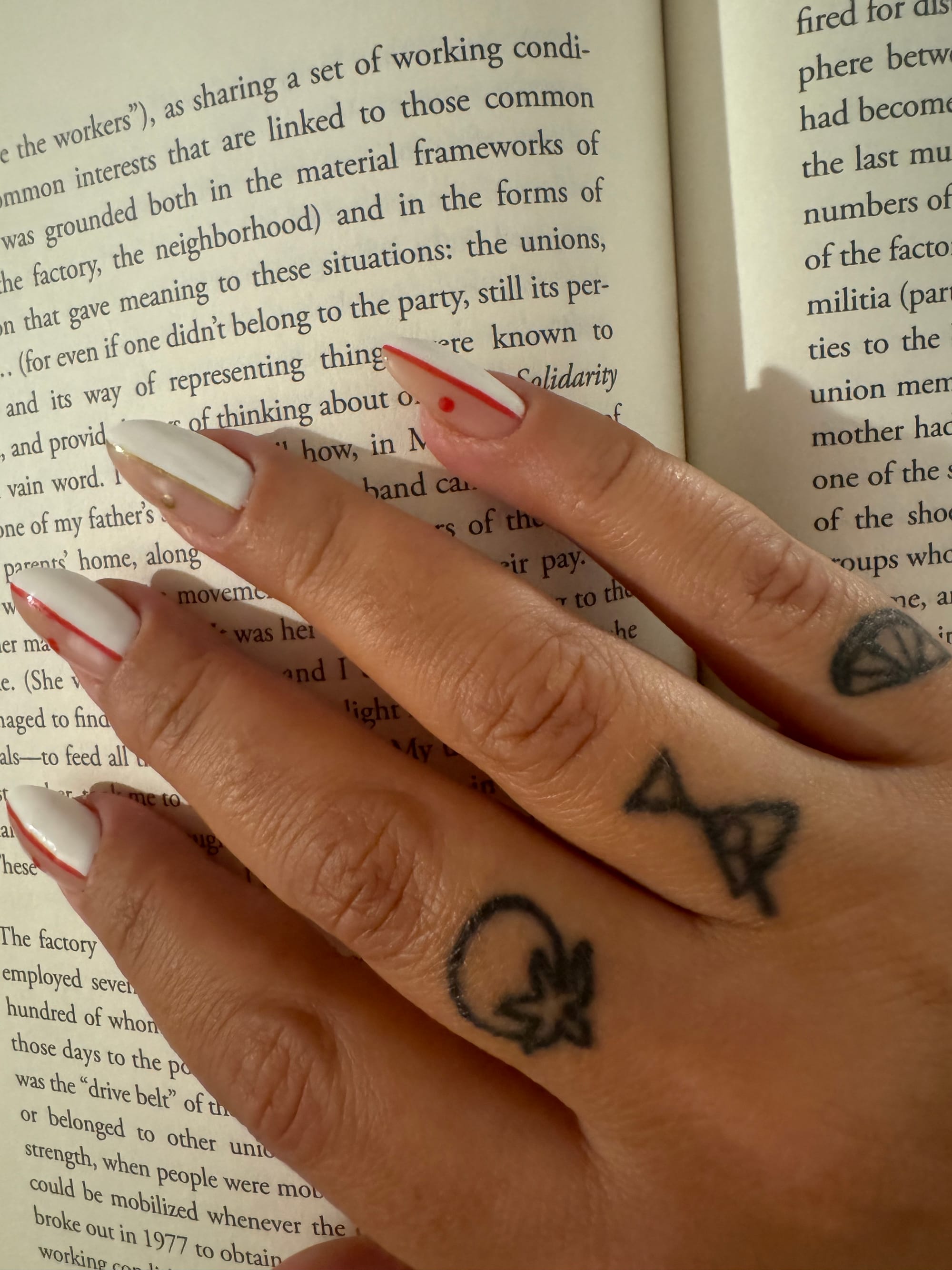
JD: If I recall correctly from following you since back in the day, you have a martini tattoo, right?
AK: Yeah, on my knuckle. [extends knuckle to camera]
🍸🍸🍸
JD: I typically end a Power Lunch with the question, “Dessert’s always a good idea, right?” But maybe we should just say, our dessert is martinis?
AK: Yes, absolutely.
JD: OK, a round of martinis. [We will need to wait a minute for them to make ‘em!] OK, cheers!
AK: Cheers!
